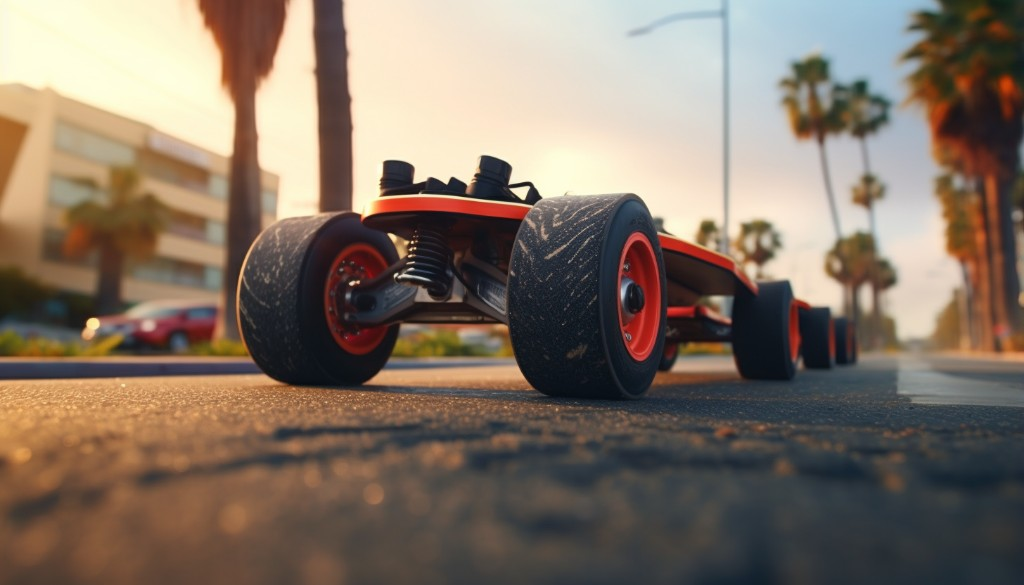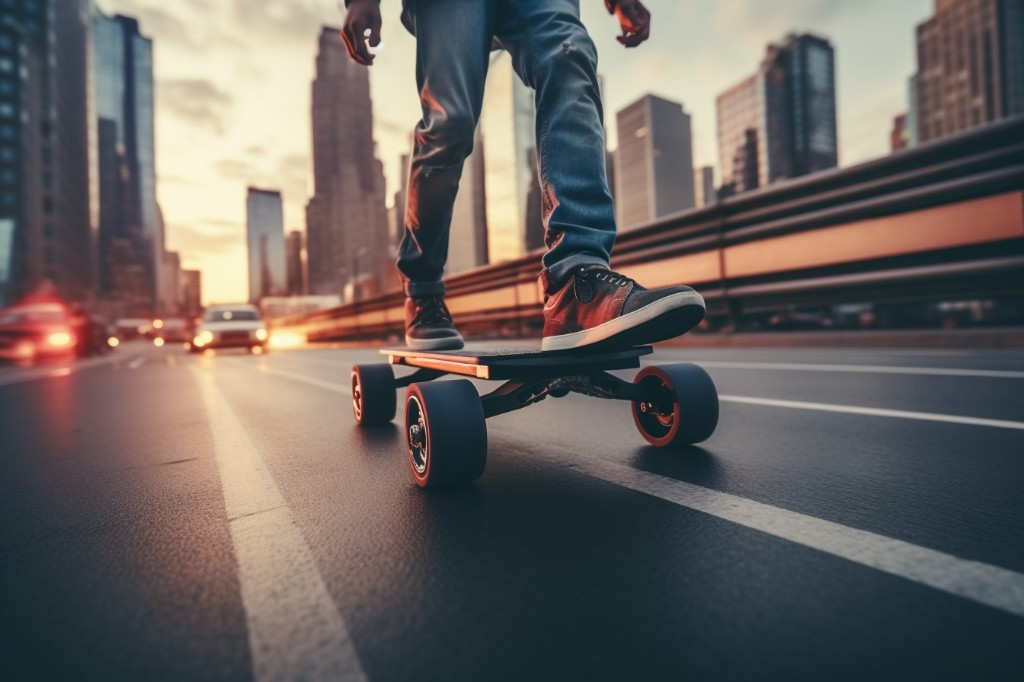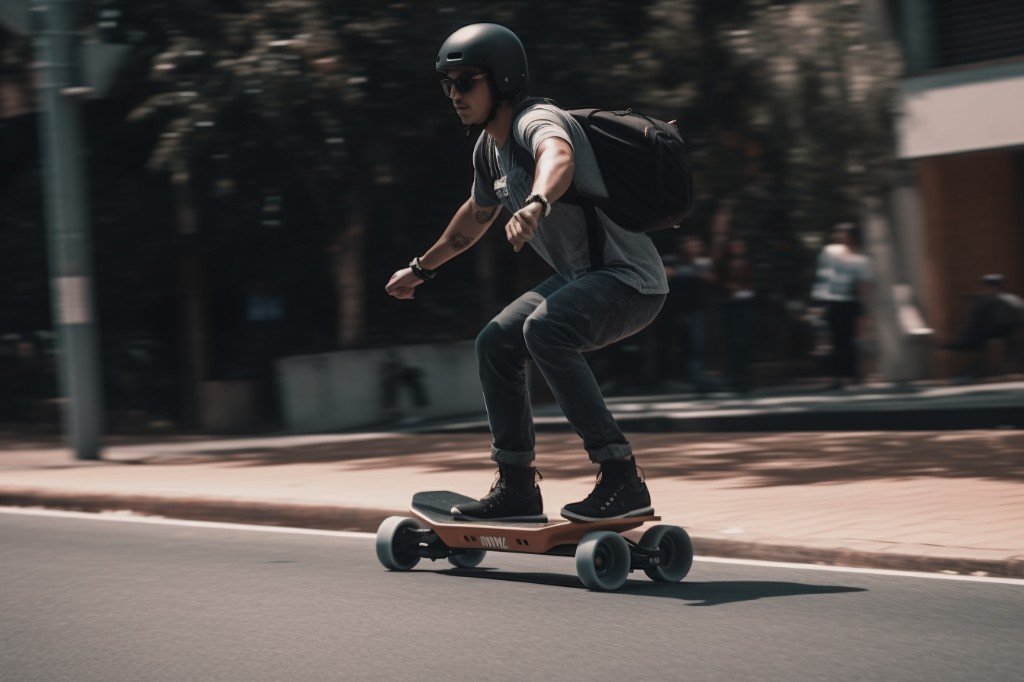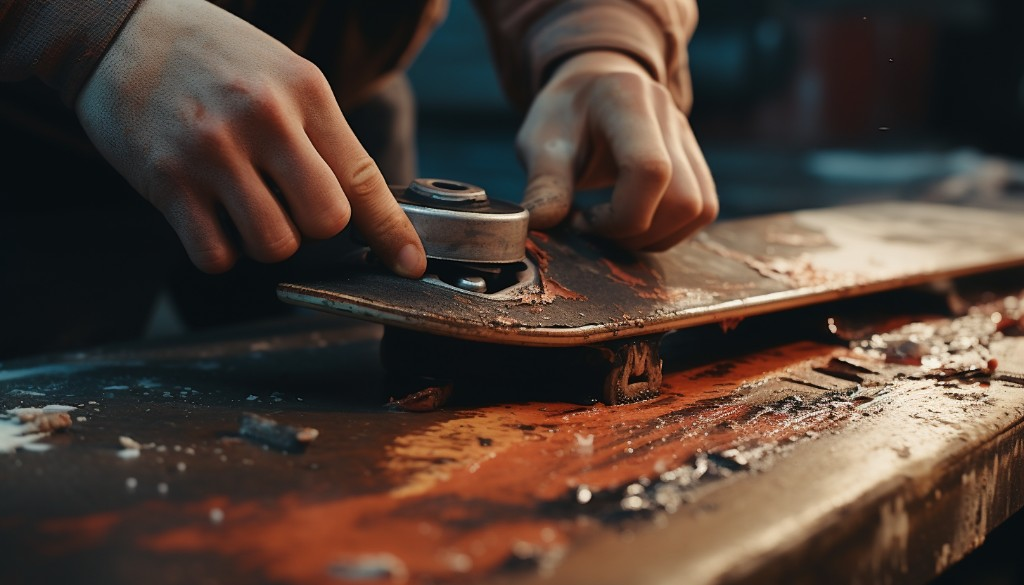Picture yourself gliding smoothly down the street, a breeze caressing your face, as you masterfully carve your path on an electric skateboard. This moment of exhilarating freedom, this art of electric skateboarding, is within your grasp. This comprehensive guide will delve into the nuts and bolts of carving techniques, providing you with unique insights to elevate your riding experience.
What we’ll cover:
- Grasping Electric Skateboarding
- Carving Fundamentals
- Riding Stance Optimization
- Equipment’s Role in Carving
- Advanced Carving Techniques
- Diverse Riding Styles & Methods
- Safety Guidelines
- Maintenance for Smooth Carving
Let’s jump right in, and unveil the secrets behind transforming every ride into a masterpiece with your electric skateboard!
Understanding Electric Skateboarding
Electric skateboarding opens up a whole new world of outdoor thrill and excitement. Think about it: you’re on a compact, sleek board, but it’s powered by electricity. This means you can glide along smooth surfaces without breaking a sweat, even uphill. Now imagine riding an electric skateboard down a scenic city street, with the world passing by in a blur.
The real beauty of electric skateboarding is that it’s not just about getting from point A to point B. It’s about the ride itself. The rush of adrenaline as you pick up speed and the pure joy of movement. When it comes to carving techniques, mastering these can make your ride even more exhilarating. Carving allows you to make sharp turns and maneuver around obstacles effortlessly. It’s like surfing, but on concrete.

So what are the benefits of electric skateboarding? For starters, it’s a fantastic workout. It requires core strength, balance, and coordination. Not to mention, it’s an eco-friendly mode of transportation. No fuel emissions, no traffic jams — just you and your electric skateboard.
The Fundamentals of Carving on an Electric Skateboard
Carving on an electric skateboard is both an art and a science. It involves the basic principles of physics: balance, weight distribution, and speed.
Understanding Balance
Balance is key when it comes to carving on an electric skateboard. It means staying upright and in control as you navigate the terrain. It comes down to how well you can shift your weight from one side of the board to the other.
Weight Distribution
Weight distribution also plays a crucial role in carving techniques. By shifting your weight forward, you can increase speed and momentum. On the other hand, shifting your weight back allows you to slow down and make sharp turns.
Role of Speed
Of course, carving isn’t possible without speed. The faster you go, the more force you can put into your turns — but remember, speed also requires control.
Now that we’ve covered the basics, it’s time to hit the pavement and practice. Remember: practice makes perfect. It may take a few tries to get the hang of it, but once you do, carving on an electric skateboard will feel as natural as walking.

Perfecting Your Riding Stance for Effective Carving
Just like any sport or physical activity, having the right stance is critical when it comes to electric skateboarding.
Importance of Foot Position
Your foot position determines how effectively you can steer and control your electric skateboard. Generally speaking, your front foot should be towards the front of the board, while your back foot should be near the rear end.
Mastering Regular and Goofy Stances
There are two main stances in skateboarding: regular and goofy. In a regular stance, your left foot is forward, while in a goofy stance, your right foot is forward. There’s no right or wrong here; it’s all about what feels most comfortable for you.
Maintaining Balance During Carving
Maintaining balance during carving is where things get challenging. As you pick up speed and start making turns, your body needs to adjust accordingly. This means shifting your weight from side to side while keeping your knees slightly bent.
Remember: riding an electric skateboard is supposed to be fun! Don’t worry about getting everything perfect right away. Keep practicing, keep learning, and most importantly – keep enjoying the ride!
The Role of Equipment in Carving Techniques
At the heart of impactful electric skateboard carving techniques is the equipment used. In essence, the type of equipment can greatly influence the carving experience and effectiveness.
Influence of Deck Shape and Truck Adjustments
One of the major factors that impact carving is the deck shape of the electric skateboard. The deck shape determines the level of comfort and control a rider has, thus influencing their carving ability. For instance, a shorter deck provides better maneuverability, making it easier for riders to execute sharp turns.
Truck adjustments also play an essential role in carving techniques. Loose trucks offer more flexibility and allow for deep carves, while tight trucks provide higher stability but limit the movement. Therefore, finding a balance with your truck adjustments between stability and flexibility is crucial for optimal carving on your electric skateboard.
Significance of Wheel Size
Wheel size is another important equipment aspect to consider when it comes to carving techniques. Larger wheels provide more speed and cover ground faster, but they can make the board less responsive to carving moves. Conversely, smaller wheels may not offer the same speed, but they are more responsive to weight shifts and turns, thus enhancing carving experience.
Role of Grip Tape in Maintaining Balance
Finally, don’t underestimate the role of grip tape in maintaining balance while carving. Grip tape on an electric skateboard provides traction and keeps the rider’s feet from slipping off the board during carving maneuvers. It gives riders the confidence to lean into their carves without fear of losing grip.

Advanced Electric Skateboarding Carving Techniques
Now that we understand the role of equipment in carving techniques let’s dive into some advanced methods for electric skateboarding carving.
Frontside and Backside Carves
Frontside carve refers to when a rider carves with their front facing the direction of the turn. In contrast, a backside carve implies turning with the back facing the direction of the turn. Mastering both styles is vital for executing varied carve patterns on your electric skateboard and enhancing overall riding experience.
Techniques for Downhill and Uphill Carving
Downhill carving on an electric skateboard is exhilarating but requires precise control and technique. The key to effective downhill carving lies in alternating weight distribution between your toes and heels while maintaining a low center of gravity.
Uphill carving, on the other hand, is all about maintaining momentum. Picking up speed before inclining uphill and leaning into carves helps maintain momentum necessary for smooth uphill carving.
Mastering Turning Radius
Turning radius profoundly influences your carving technique. A tighter turning radius allows for sharper turns while a wider turning radius facilitates smoother, more gradual curves. Thus, improving your ability to control and vary your turning radius according to terrain changes is paramount for mastering advanced electric skateboarding carving.

Exploring Different Riding Styles and Carving Methods
Every rider has a unique style, which often reflects in their carving methods. Hence, exploring different riding styles and understanding how they influence carve patterns can help you improve your own carving techniques.
Overview of Different Riding Styles
There are several riding styles in electric skateboarding, each with its characteristics. For instance, some riders prefer a relaxed cruising style with long, sweeping carves, while others might favor an aggressive style marked by sharp turns and quick carves. Identifying your preferred style can significantly enhance your electric skateboard ride.
Exploration of Various Carve Patterns
Exploring various carve patterns can add variety to your ride and make it more enjoyable. For example, you can mix long, slow carves with sharp turns or alternate between frontside and backside carves to create unique carve patterns on your electric skateboard.
Tips for Improving Pivot During Carving
Improving pivot while carving can lead to smoother transitions between different carve types. One tip for improving pivot is to practice shifting your weight from one foot to the other while maintaining balance. Another is to master the art of leaning into turns without losing control over your board. By following these tips and continually refining your technique, you can take your electric skateboard carving skills to new heights.

Safety Guidelines for Electric Skateboarding
Safety is a significant aspect of any activity and electric skateboarding is no exception. When first learning how to carve, you may be more likely to take a tumble, so following safety guidelines is essential.
Importance of Wearing Safety Gear
Among the key ways to ensure safety while skateboarding is using the right safety gear. One of the most critical pieces of equipment is a helmet. A helmet is a must-have for any electric skateboarder as it protects your head from serious injuries in case of a fall or collision.
Besides the helmet, knee pads and elbow pads are equally important. They provide protection for your knees and elbows which are usually the first to hit the ground during a fall. Also, don’t overlook wrist guards. They can save you from nasty scrapes, as well as more serious wrist and arm fractures.

Maintenance Tips for a Smooth Carving Experience
Proper maintenance of your electric skateboard can make your rides smoother and more enjoyable, while also extending the life of your equipment. If you desire a smooth carving experience, then carrying out essential maintenance on your skateboard is an absolute must.
Taking Care of Bearings and Bushings
The performance of your skateboard greatly depends on the condition of its bearings and bushings. Regular cleaning and lubrication can keep them functioning optimally and prevent unnecessary wear. This will then aid in your carving endeavours.
Regular Maintenance for Better Battery Life and Motor Power
The health of the battery life and motor power is largely dependent on how well it’s maintained. Be sure to monitor battery levels and avoid overcharging. Additionally, keep the motor clean and free from debris to ensure it delivers maximum power.
Handling Different Terrain Types and Weather Conditions
Lastly, different terrain types require different approaches when it comes to maintenance. Riding on sandy or wet surfaces may require additional cleaning to remove abrasive particles or moisture that could cause damage.
Moreover, differing weather conditions call for different care routines. For instance, if you ride in wet conditions, ensure you dry your board thoroughly afterwards to prevent rusting.

Closing Thoughts
In the realm of electric skateboarding, understanding the fundamentals and advanced techniques of carving is crucial. A rider’s stance plays an integral part in effective carving and largely depends on both the role of equipment and the individual’s familiarity with different riding styles and carving methods. The importance of safety guidelines and regular maintenance can’t be understated to ensure a smooth carving experience. From adjusting your foot position for maximum control to exploring various terrains, the art of electric skateboarding is truly a journey, a constant exploration of balance, agility, and responsiveness. Happy carving!
Frequently Asked Questions
What are the basic carving techniques for electric skateboarding?
The basic carving techniques for electric skateboarding involve understanding weight distribution and board movement. This includes shifting your weight forward and backward to make turns, and using your hips and shoulders to guide the direction of the carve.
How does foot position influence my ability to carve effectively?
Foot position plays a significant role in your ability to carve effectively on an electric skateboard. Proper foot position allows for better control and balance. Generally, feet should be positioned shoulder-width apart, with your leading foot pointed towards the front of the board and your back foot perpendicular to the direction of movement.
Which safety gear is essential when learning to carve on an electric skateboard?
When learning to carve on an electric skateboard, it’s critical to equip yourself with safety gear. This includes a helmet to protect your head from potential falls or accidents, knee and elbow pads to guard against scrapes and bruises, wrist guards to prevent sprains or fractures, and appropriate footwear for grip and comfort.
How do different terrain types affect the carving experience?
Different terrain types can significantly affect the carving experience on an electric skateboard. For example, smoother surfaces like asphalt or concrete are ideal for carving due to their lack of obstructions, while rougher terrains such as gravel or dirt paths may require more effort and skill to navigate.
What are some maintenance tips for a smooth carving experience on an electric skateboard?
To ensure a smooth carving experience on an electric skateboard, regular maintenance is key. This includes keeping the board clean, regularly checking and adjusting the trucks, ensuring the wheels are in good condition and properly inflated, and inspecting the board for any damage before each ride.

